WATER FOWL |
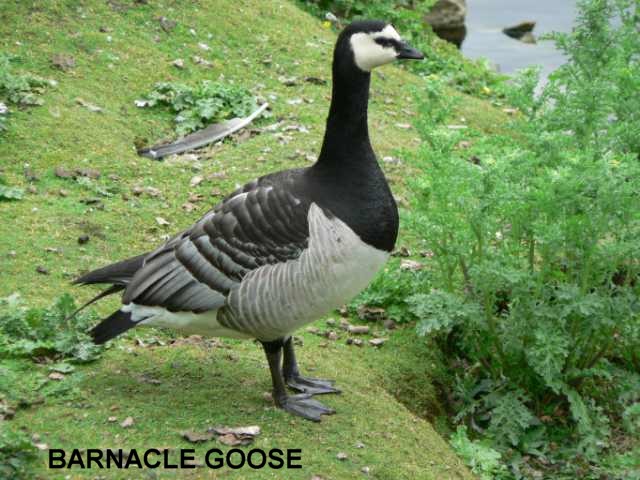
Branta leucopsis
Habitat:Marshlands, coastal marshes and grasslands.
Diet:Leaves, stems, roots and seeds.
|
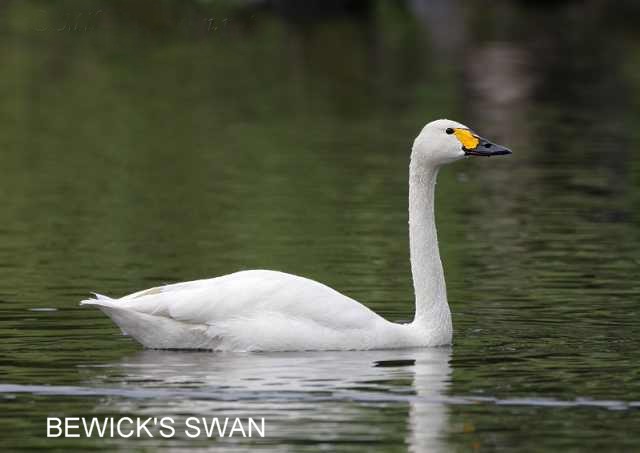
Cygnus columbianus
Habitat:Wetland habitats, mainly shallow lakes and slow rivers near grassy meadows. Also feed in farmland on grain stubble and root crops.
Diet:Leaves, shoots and roots.
|
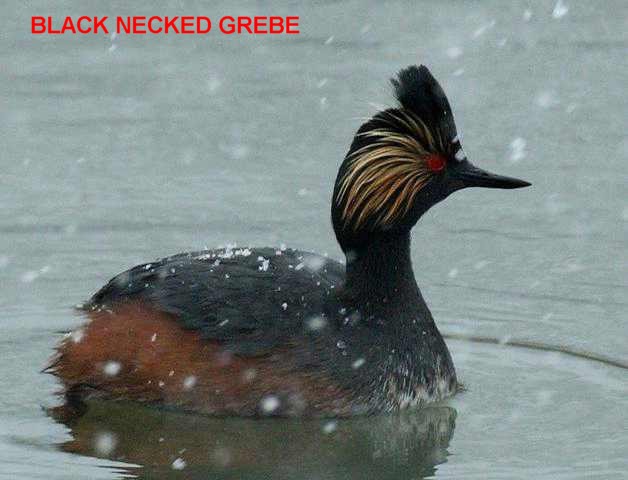
Podiceps nigricollis
Habitat:Breeds on shallow well-vegetated lakes. Winters on estuaries, lakes and reservoirs.
Diet:Insects, crustaceans and small fish.
|
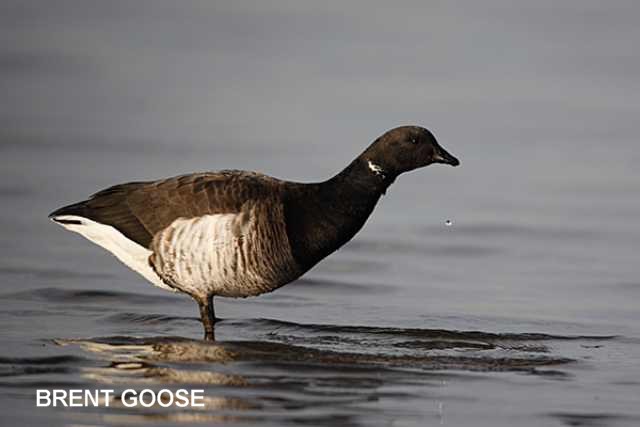
Branta bernicla
Habitat:Estuaries and saltmarshes.
Diet:Vegetation, especially eel-grass.
|
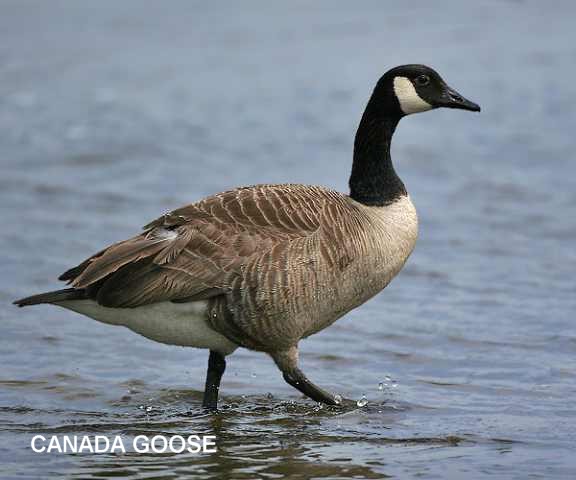
Branta canadensis
Habitat:Lakes, gravel pits and town parks.
Diet:Vegetation - roots, grass, leaves and seeds.
|
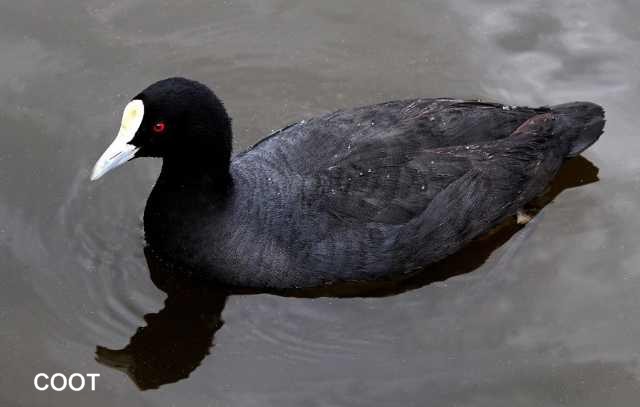
Fulica atra
Habitat:Mainly on freshwater lakes, gravel pits, reservoirs, rivers and town park lakes when deep enough.
Diet:Vegetation, snails and insect larvae.
|

Somateria mollissima
Habitat:Coasts, especially sheltered bays and estuaries. Very rare inland.
Diet:Shellfish, especially mussels.
|

Anas strepera
Habitat:Visit gravel pits, lakes, reservoirs and coastal wetlands in winter
Diet:Stems, leaves and seeds.
|

Anas querquedula
Habitat:It favours shallow wetlands, with flooded meadows and ditches, and plenty of aquatic vegetation
Diet:Plant material and insects.
|
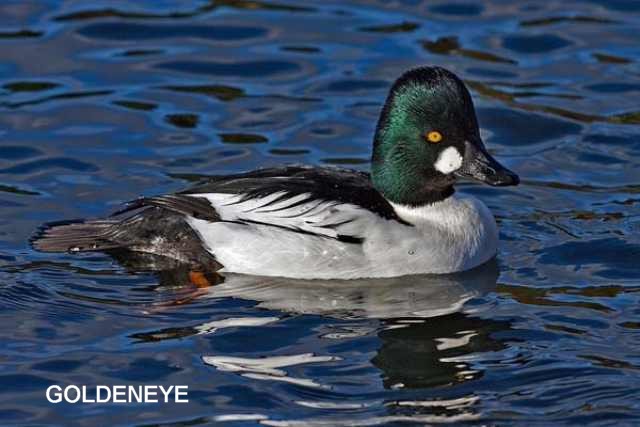
Bucephala clangula
Habitat:Usually located near ponds, lakes, or rivers.
Diet:Mussels, insect larvae, small fish and plants
|
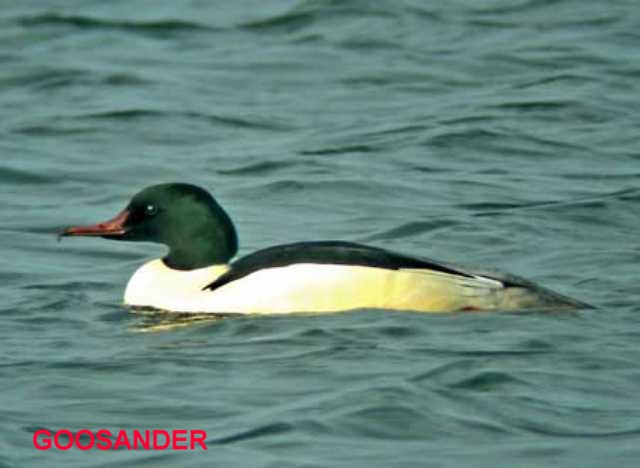
Mergus merganser
Habitat:Rivers. In winter they can be found on lakes, reservoirs and gravel pits.
Diet:Fish
|
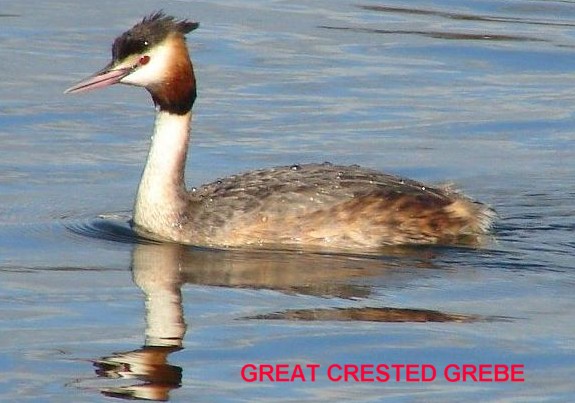
Podiceps cristatus
Habitat:Lowland lakes, gravel pits, reservoirs and rivers. Also found along coasts in winter.
Diet:Mainly fish.
|
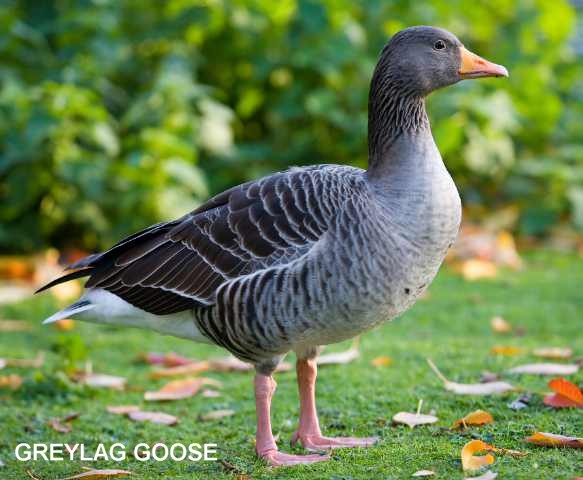
Anser anser
Habitat:Breeds on boggy moorland, often near water. Winters on flooded grassland, estuaries and arable fields.
Diet:Grass, roots, cereal leaves and spilled grain.
|

Tachybaptus ruficollis
Habitat:Look for it wherever there are suitable lakes, gravel pits, canals and slow rivers with plenty of vegetation.
Diet:Insects and larvae
|

Clangula hyemalis
Habitat:The best chance of seeing long-tailed ducks is from seawatching points around the coast in winter, particularly in northern Scotland,
Shetland and Orkney.
Diet:Mussels, cockles, clams, crabs and small fish.
|

Anas platyrhynchos
Habitat:It is the commonest duck and most widespread so you have a chance of seeing it just about anywhere where there is suitable wetland habitat,
even in urban areas.
Diet:Seeds, acorns and berries, plants, insects and shellfish.
|
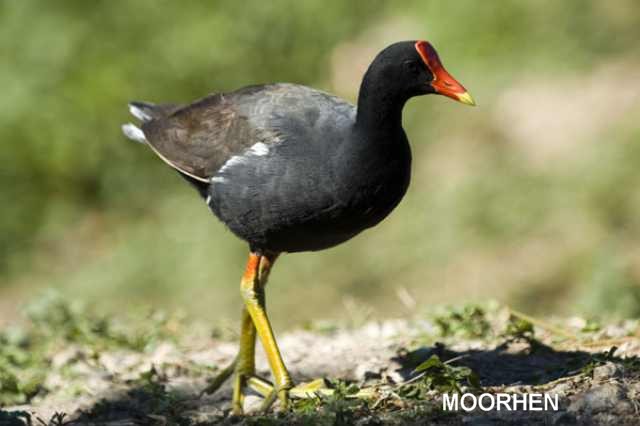
Gallinula chloropus
Habitat:There's a chance of seeing a moorhen anywhere where there is water - from a small ditch or a lake in a city centre park, to a big lake or
reservoir.
Diet:Water plants, seeds, fruit, grasses, insects, snails and worms.
|
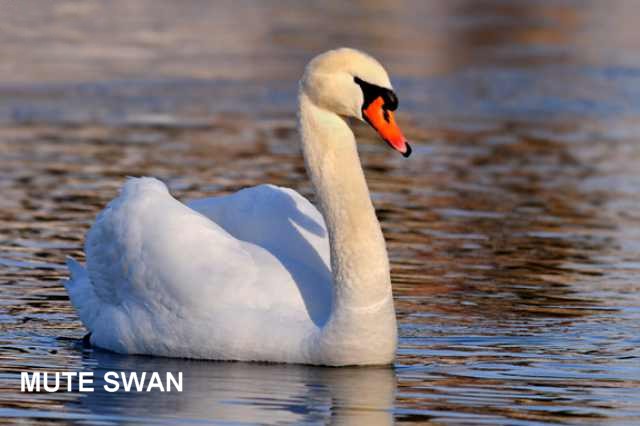
Cygnus olor
Habitat:Possible to see the Mute swan anywhere there is a shallow lake, or a slow-flowing rivers, even in urban areas and parks.
Diet:Water plants, insects and snails.
|
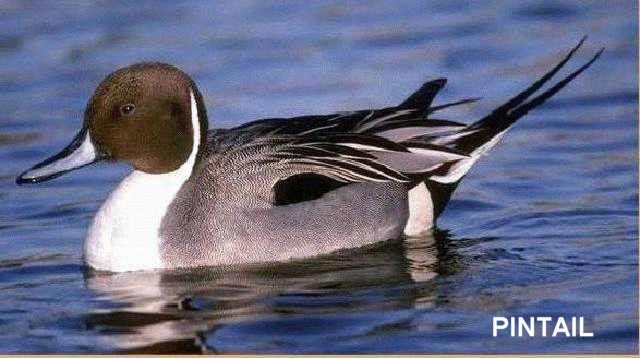
Anas acuta
Habitat:Open unwooded wetlands, such as wet grassland and lakesides, sheltered estuaries, brackish marshes and coastal lagoons.
Diet:A variety of plants and invertebrates.
|
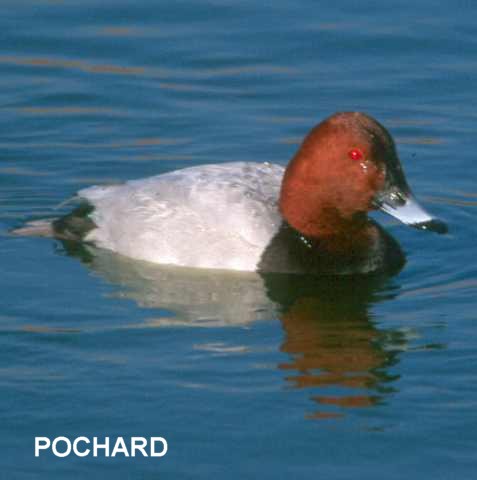
Aythya ferina
Habitat:Good places to look in summer are open lakes and gravel pits in lowland eastern England and Scotland. Found more widely in winter,
often on larger lakes and even on estuaries.
Diet:Plants and seeds, snails, small fish and insects.
|
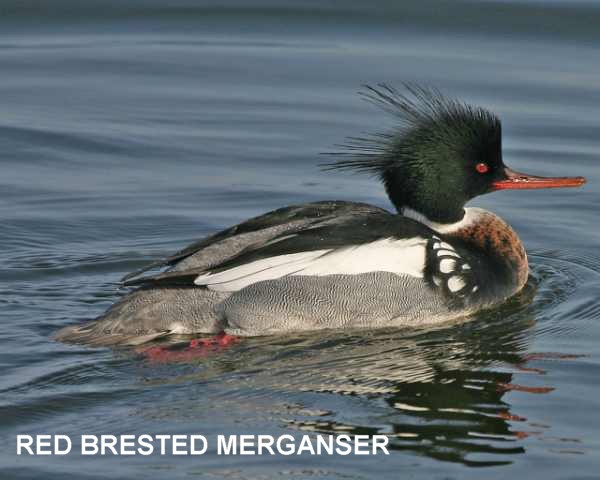
Mergus serrator
Habitat:Breeds beside rivers, lakes and coastal and freshwater pools. Winters on estuaries and coasts.
Diet:Fish.
|
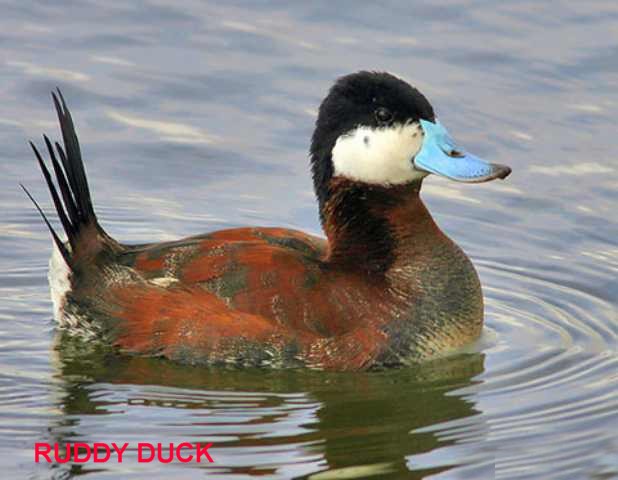
Oxyura jamaicensis
Habitat:Preferred breeding habitats include freshwater marshes, marshy lakes, and ponds. Found in marshes and shallow coastal bays during winter.
Diet:Aquatic insect larvae and plant seeds
|

Tadorna tadorna
Habitat:Shelducks are found mainly in coastal areas, although they can also be found around inland waters such as reservoirs and gravel workings.
Diet:Invertebrates, small shellfish and aquatic snails.
|
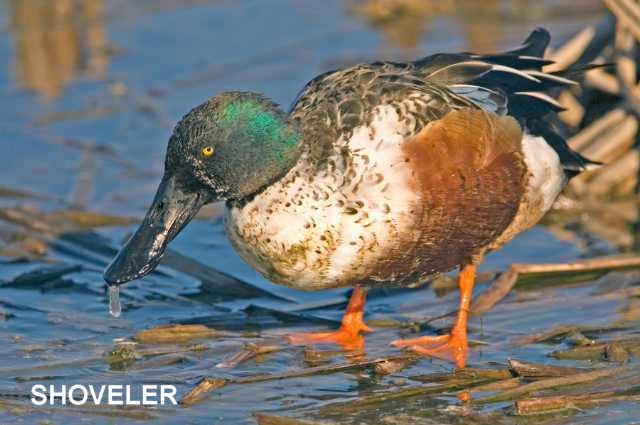
Anas clypeata
Habitat:Breeds on marshy and reed-fringed pools. Winters on lakes, reservoirs, marshes and occasionally estuaries
Diet:Small insects and plant matter sifted from the water
|
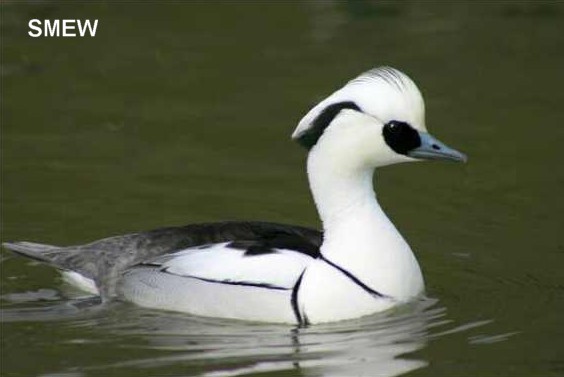
Mergus albellus
Habitat:Breeds in trees beside lakes. Winters on lakes, reservoirs and estuaries.
Diet:Fish, insect larvae and other insects.
|

Anas crecca
Habitat:Breeds in wet moorland, heath pools, bogs etc. In winter occurs on lakes and ponds of all kinds, marshes and to a lesser extent on coasts,
estuaries and mudflats.
Diet:Seeds and small invertebrates
|
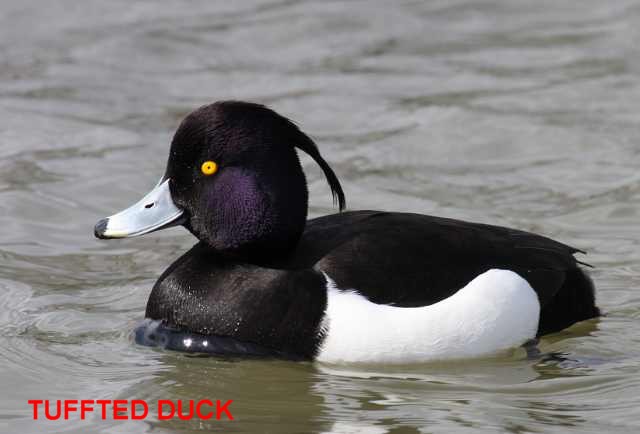
Aythya fuligula
Habitat:Found across the UK at most times of year. Look in suitable habitat such as a local reservoir, gravel pit or lake.
Diet:Molluscs, insects and some plants.
|
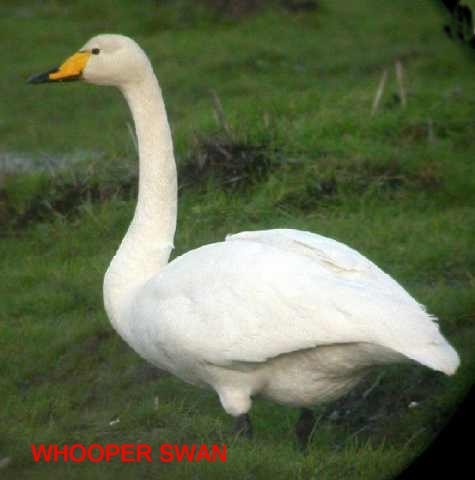
Cygnus cygnus
Habitat:Wetland habitats, mainly shallow lakes and coastal flats. Also feed in farmland on grain stubble and root crops.
Diet: Aquatic plants, grass, grain, potatoes
|
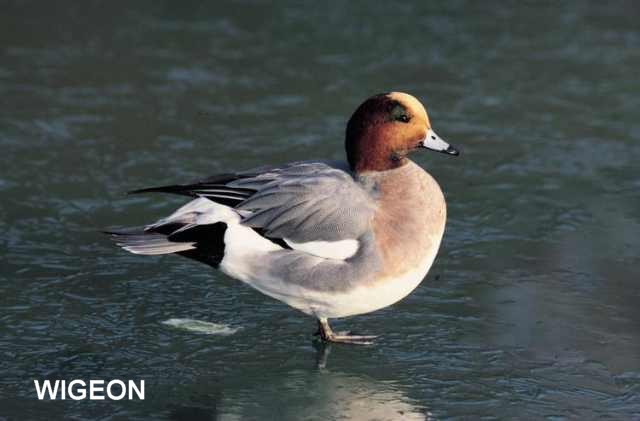
Anas penelope
Habitat:Breeds by rivers and lakes, and in winter found in estuaries, lakes and flooded grassland
Diet:Aquatic plants, grasses, roots.
|

